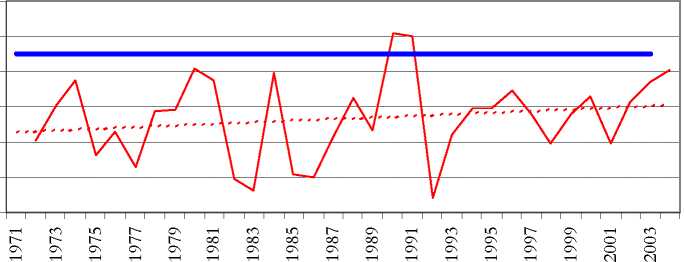In addition to the supply-side mechanisms described above, there may also be a number of
important demand-side effects, which could lead to an adjustment in equilibrium unemployment.
In addition, a number of possible “price push” factors may cause product demand changes to
impact on equilibrium unemployment. Some of these are wage-price stickiness (the traditional
Keynesian argument), changes in the marginal product of inputs, competitive interaction between
firms, changes in the real user-cost-of-capital and changes in the composition of demand
(Pichelmann and Schuh, 1997).
Fortunately the increasing trend in the NAWRU is gradually easing with a distinct turnaround of
late, which could in future result in a reversal in the rate of unemployment in the South African
economy. However, such a reversal will be short-lived if not supported by adequate labour
market reform, as will be momentarily outlined.
Potential output and capacity of South Africa
The empirical results of the structural analysis for potential output and capacity utilisation for
South Africa are provided in figures 3 and 4.
Figure 3: Output growth
10.00
8.00
6.00
4.00
α
2.00
<υ
0.00
-2.00

"Sustainable" potential......."Sustainable" potential (trend)
More intriguing information
1. DURABLE CONSUMPTION AS A STATUS GOOD: A STUDY OF NEOCLASSICAL CASES2. Subduing High Inflation in Romania. How to Better Monetary and Exchange Rate Mechanisms?
3. FDI Implications of Recent European Court of Justice Decision on Corporation Tax Matters
4. New Evidence on the Puzzles. Results from Agnostic Identification on Monetary Policy and Exchange Rates.
5. Biological Control of Giant Reed (Arundo donax): Economic Aspects
6. Natural hazard mitigation in Southern California
7. IMPACTS OF EPA DAIRY WASTE REGULATIONS ON FARM PROFITABILITY
8. The name is absent
9. The name is absent
10. The Global Dimension to Fiscal Sustainability